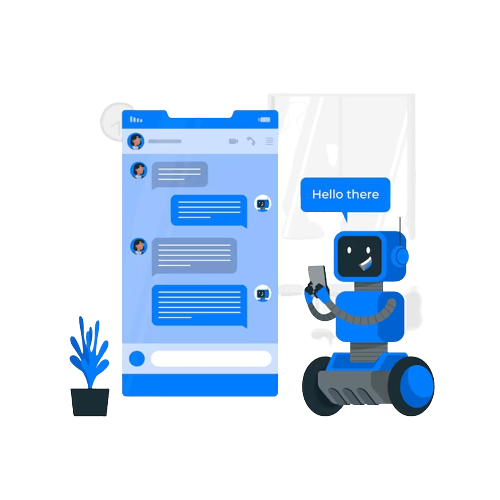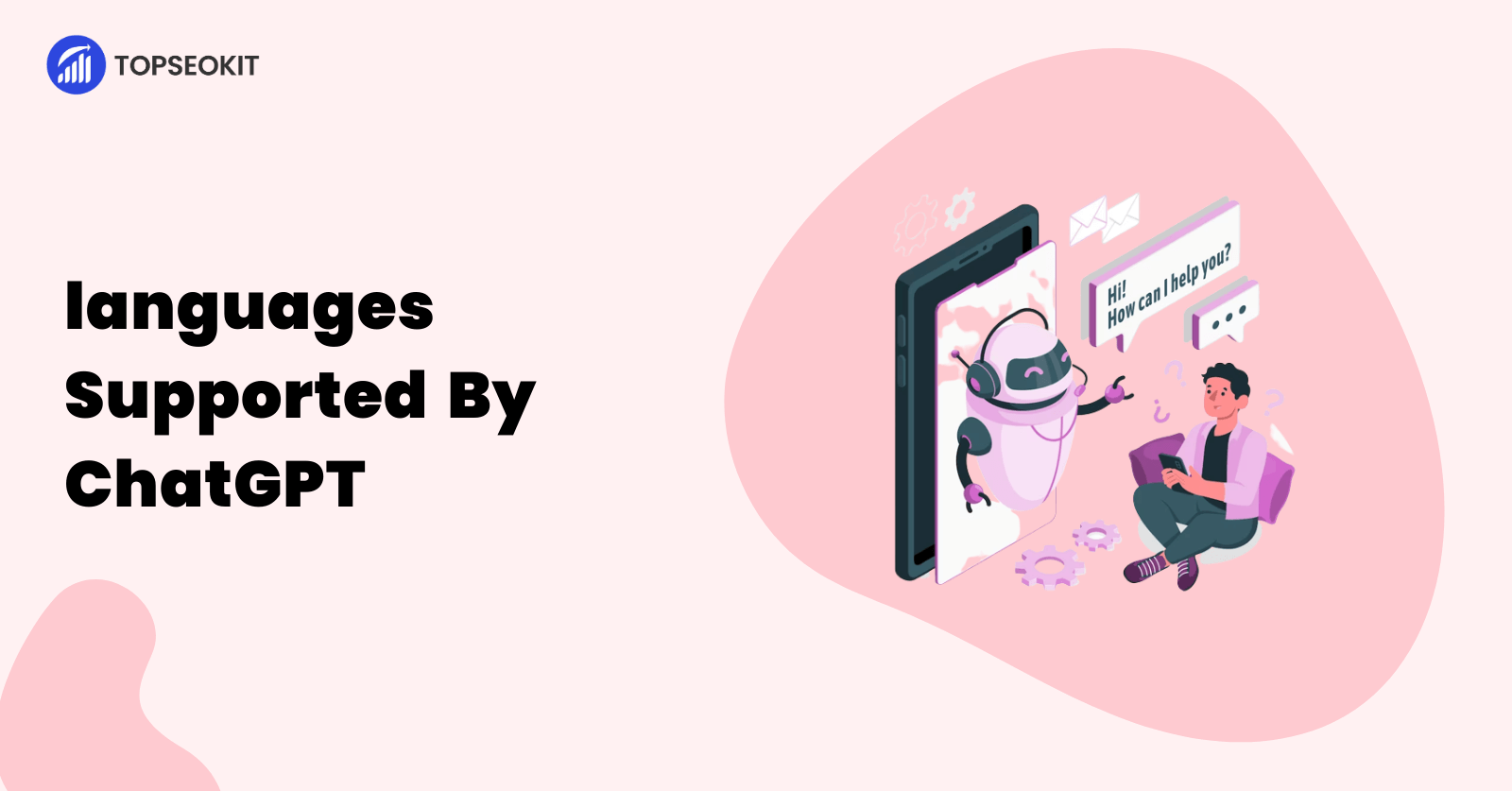- Brief overview of ChatGPT
- Top Languages Supported by ChatGPT
- Additional Languages Supported by ChatGPT
- Multilingual Capabilities and Limitations
- Future Developments and Improvements
- How to Get the Most Out of ChatGPT’s Language Support
- Conclusion
- Faqs
This blog post aims to provide a comprehensive list of languages supported by Chatgpt.
By understanding the extent of ChatGPT’s language capabilities, you can make the most of this powerful AI tool in your personal and professional life.
1. Brief Overview of ChatGPT
As a user of AI technology, you might already be familiar with ChatGPT, a powerful language model developed by OpenAI.
It’s designed to understand and generate human-like text.
It is an invaluable tool for various applications, such as content creation, customer support, and language translation.
Importance of Language Support in AI Technology
In today’s globalized world, language support is crucial for AI technology to reach its full potential.
AI models like ChatGPT can cater to a diverse audience by supporting multiple languages.
It results in breaking down communication barriers, and fostering better understanding among people from different linguistic backgrounds.
2. Top Languages Supported by ChatGPT
English
As the primary language of the internet and global business, English is the most extensively supported language by ChatGPT.
Its proficiency in English allows you to generate high-quality content, answer questions, and engage in meaningful conversations with users worldwide.
Spanish
Spanish is the second most spoken language in the world, and ChatGPT offers robust support.
Whether you’re looking to create content for a Spanish-speaking audience or translate text between English and Spanish, Chatgptcan be a valuable resource.
French
French, a widely spoken language across Europe, Africa, and North America, is also well-supported by ChatGPT.
It enables you to communicate effectively with French-speaking users and create content tailored to their linguistic preferences.
German
German, the most spoken language in the European Union, is another language that ChatGPT supports.
With its ability to understand and generate German text, you can engage with German-speaking audiences and create content that resonates with them.
Italian
Italian, a Romance language spoken primarily in Italy, is also supported by ChatGPT.
It allows you to create content for Italian-speaking users and engage with them in their native language.
Portuguese
Portuguese, spoken in Portugal, Brazil, and several African countries, is another language ChatGPT supports.
Its proficiency in Portuguese enables you to communicate with Portuguese-speaking users and create content that appeals to them.
Dutch
Dutch, the official language of the Netherlands and Belgium, is also supported by ChatGPT.
It allows you to create content for Dutch-speaking audiences and engage with them effectively.
Russian
Russian, the most widely spoken Slavic language, is supported by ChatGPT.
It allows you to create content for Russian-speaking users and engage with them in their native language.
Chinese
Chinese, the world’s most spoken language in the world, is supported by ChatGPT.
Its ability to understand and generate Chinese text enables you to communicate with Chinese-speaking users and create content tailored to their linguistic preferences.
Korean
Korean, the official language of both North and South Korea, is another language that ChatGPT supports.
With its proficiency in Korean, you can create content for Korean-speaking audiences and engage with them effectively.
As you explore the world of ChatGPT, you’ll be pleased to know that its language capabilities extend beyond the top languages we’ve discussed.
In this section, we’ll delve into additional languages supported by ChatGPT.
Moreover examine the factors affecting the quality of support for each language, and discuss this powerful AI tool’s multilingual capabilities and limitations.
3. Additional Languages Supported by ChatGPT

In addition to the top languages we discussed earlier, ChatGPT offers support for various other languages.
It allows you to communicate with people from diverse linguistic backgrounds and create content that appeals to a global audience.
Some examples of these additional languages include Japanese, Arabic, Turkish, and Swedish.
- English
- Spanish
- French
- German
- Italian
- Portuguese
- Dutch
- Russian
- Chinese
- Korean
- Japanese
- Arabic
- Hindi
- Bengali
- Punjabi
- Urdu
- Tamil
- Telugu
- Kannada
- Malayalam
- Marathi
- Gujarati
- Indonesian
- Malay
- Vietnamese
- Thai
- Turkish
- Greek
- Polish
- Czech
- Slovak
- Hungarian
- Romanian
- Bulgarian
- Croatian
- Serbian
- Slovenian
- Albanian
- Macedonian
- Estonian
- Latvian
- Lithuanian
- Finnish
- Swedish
- Norwegian
- Danish
- Icelandic
- Filipino
- Swahili
- Zulu
- Xhosa
- Afrikaans
- Hebrew
- Yiddish
- Farsi
- Pashto
- Nepali
- Sinhalese
- Georgian
- Armenian
- Azerbaijani
- Kazakh
- Kyrgyz
- Uzbek
- Tajik
- Turkmen
- Hausa
- Igbo
- Yoruba
- Amharic
- Tigrinya
- Somali
- Oromo
- Wolof
- Mandinka
- Kinyarwanda
- Kirundi
- Luganda
- Akan
- Twi
- Ewe
- Ga
- Malagasy
- Sesotho
- Setswana
- Siswati
- Tswana
- Xitsonga
- Sepedi
- isiZulu
- isiXhosa
- isiNdebele
- Shona
- Nyanja
- Chichewa
Factors Affecting the Quality of Language Support
The quality of support for each language depends on several factors:
- Training data: Languages with more extensive training data, such as English and Spanish, tend to have better support than those with limited data.
- Language complexity: Languages with complex grammar rules or unique character sets may pose challenges for ChatGPT, affecting support quality.
- Language-specific nuances: Understanding idiomatic expressions or slang specific to certain regions or cultures can be challenging for AI models like ChatGPT.
4. ChatGPT’s Multilingual Capabilities and Limitations
ChatGPT’s multilingual capabilities result from its training on vast multilingual data. However, there are some limitations to consider:
Understanding context and cultural nuances
ChatGPT may need help with capturing the subtleties of each language fully, especially when it comes to idiomatic expressions or slang specific to certain regions or cultures.
Impact on user experience
The quality of language support can significantly affect the user experience.
Practical understanding and generation of text in a user’s native language lead to a more seamless and satisfying experience.
In contrast, limitations in language support can result in misunderstandings or less accurate text generation.
5. Future Developments and Improvements

As AI technology evolves, OpenAI is committed to enhance language support in ChatGPT.
It includes expanding the range of supported languages and addressing cultural and contextual limitations to provide a more seamless user experience.
OpenAI’s Ongoing Efforts to Enhance Language Support
OpenAI is constantly working to improve ChatGPT’s language capabilities by refining its algorithms and incorporating more diverse training data
This ongoing effort aims to ensure that ChatGPT remains a cutting-edge tool for communication and content creation in various languages.
Potential Expansion of Supported Languages
As part of its commitment to enhancing language support, OpenAI is exploring expanding the list of supported languages in Chatgpt
This expansion will enable users to communicate and create content in even more languages, further breaking linguistic barriers and fostering global connections.
Addressing Cultural and Contextual Limitations
OpenAI recognizes the importance of addressing cultural and contextual limitations in AI language models.
By incorporating more diverse training data and refining its algorithms.
OpenAI aims to improve ChatGPT’s understanding of context and cultural nuances, leading to more accurate and meaningful text generation.
6. How to Get the Most Out of ChatGPT’s Language Support
Following best practices and utilizing available resources is essential to make the most of ChatGPT’s language capabilities.
Tips for Using ChatGPT in Different Languages
- Be clear and concise in your input to help ChatGPT understand your request better.
- Use standard language and avoid slang or idiomatic expressions that may be challenging for ChatGPT to interpret.
- Experiment with different phrasings if you’re not satisfied with the initial output.
Best Practices for Multilingual Communication
- Be mindful of cultural differences and adapt your communication style accordingly.
- Use simple language and avoid complex sentences to ensure better understanding.
- Leverage ChatGPT’s translation capabilities to bridge language gaps when communicating with users of different languages.
Resources for Users Seeking Assistance in Specific Languages
- Explore ChatGPT’s documentation and user guides for tips on using the AI model in different languages.
- Join online forums and communities dedicated to ChatGPT, where you can share experiences and learn from other users.
- Contact OpenAI’s support team for assistance with language-specific issues or concerns.
7. Conclusion
In conclusion, ChatGPT offers extensive language support capabilities, enabling you to communicate and create content in various languages.
As AI technology continues to evolve, the importance of ongoing development in language support cannot be overstated.
By addressing cultural and contextual limitations and expanding the list of supported languages, ChatGPT will become an even more powerful tool for fostering global connections.
We encourage you to explore ChatGPT’s multilingual features and make the most of this.
8. FAQs
What languages is ChatGPT available in?
ChatGPT is available in multiple languages, including English, Spanish, French, German, Chinese, and Japanese, among others.
How do you switch languages in ChatGPT?
To switch languages in ChatGPT, you can either select the desired language from the language menu or use the language command followed by the language code, such as “language:es” for Spanish or “language:fr” for French.

Leave a Reply